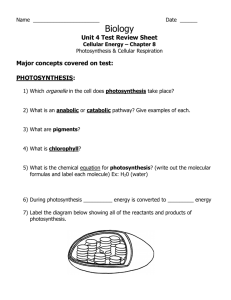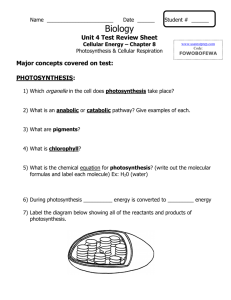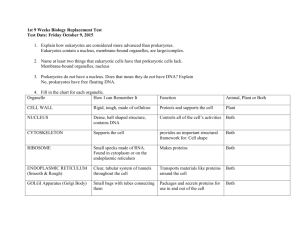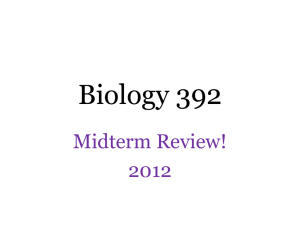PLANTS
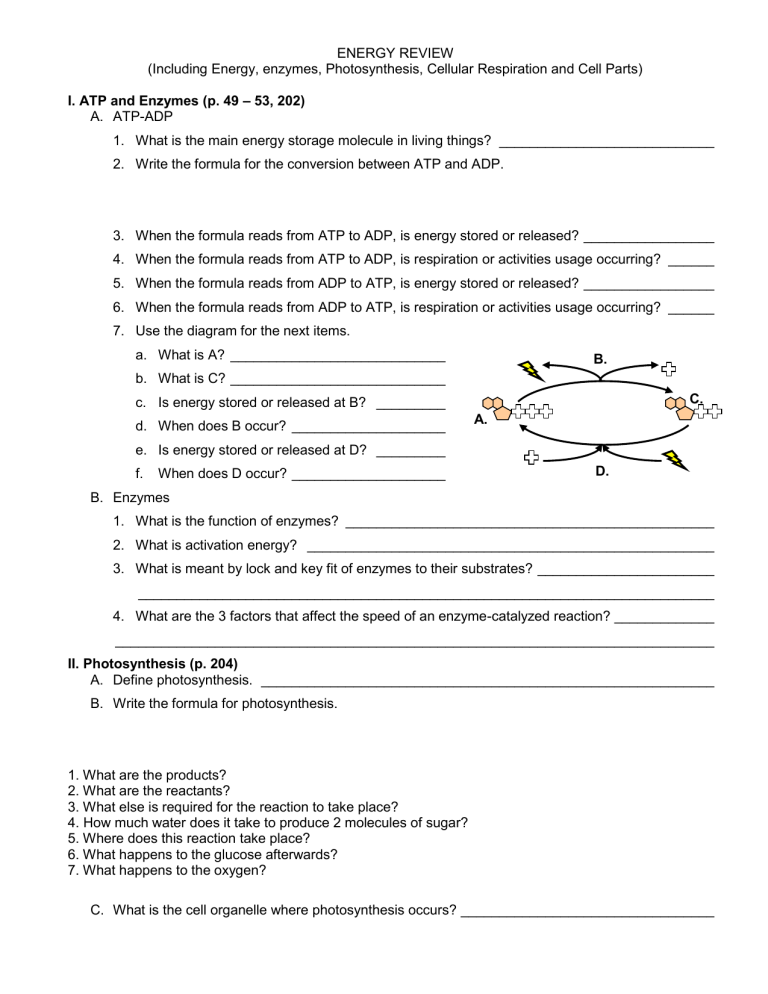
ENERGY REVIEW
(Including Energy, enzymes, Photosynthesis, Cellular Respiration and Cell Parts)
I. ATP and Enzymes (p. 49 – 53, 202)
A. ATP-ADP
1. What is the main energy storage molecule in living things? ____________________________
2. Write the formula for the conversion between ATP and ADP.
3. When the formula reads from ATP to ADP, is energy stored or released? _________________
4. When the formula reads from ATP to ADP, is respiration or activities usage occurring? ______
5. When the formula reads from ADP to ATP, is energy stored or released? _________________
6. When the formula reads from ADP to ATP, is respiration or activities usage occurring? ______
7. Use the diagram for the next items. a. What is A? ____________________________ b. What is C? ____________________________ c. Is energy stored or released at B? _________ d. When does B occur? ____________________ e. Is energy stored or released at D? _________ f. When does D occur? ____________________
A.
B.
D.
C.
B. Enzymes
1. What is the function of enzymes? ________________________________________________
2. What is activation energy? _____________________________________________________
3. What is meant by lock and key fit of enzymes to their substrates? _______________________
___________________________________________________________________________
4. What are the 3 factors that affect the speed of an enzyme-catalyzed reaction? _____________
______________________________________________________________________________
II. Photosynthesis (p. 204)
A. Define photosynthesis. ___________________________________________________________
B. Write the formula for photosynthesis.
1. What are the products?
2. What are the reactants?
3. What else is required for the reaction to take place?
4. How much water does it take to produce 2 molecules of sugar?
5. Where does this reaction take place?
6. What happens to the glucose afterwards?
7. What happens to the oxygen?
C. What is the cell organelle where photosynthesis occurs? _________________________________
D. What is the pigment found in chloroplasts that absorbs light energy? _______________________
E. What is chromatography? _________________________________________________________
F. What are the two steps in photosynthesis? ____________________________________________
G. What are four factors affecting photosynthesis? ________________________________________
_______________________________________________________________________________
III. Respiration (p. 221)
A. Define cellular respiration. _________________________________________________________
_______________________________________________________________________________
B. Write the equation for cellular respiration.
C. Where does cellular occur in the cell? _______________________________________________
D. What are the two steps in respiration? I) ______________________________________________
II) ______________________________________ or _____________________________________
1. What is glycolysis? ___________________________________________________________
How many ATPs does it produce? _______________________________________________
2. What step occurs after glycolysis if oxygen is present? _______________________________
How many ATPs are produced? _________________________________________________
3. What step occurs after glycolysis if oxygen is not present? ____________________________ g. Alcoholic fermentation:
1) What are the products of alcoholic fermentation? ______________________________
2) What is an example of an organism that performs alcoholic fermentation? __________
What products is it used to make? _________________________________________ h. Lactic Acid fermentation
1) What is the product of lactic acid fermentation? _______________________________
2) Where and when does it occur in humans? __________________________________
What products do bacteria make with it? _____________________________________
Cycle of Interdependence process: ____________________ organism occurs in ____________ organelle occurs in ____________ special need _________________
_______________
_______________
_______________
_______________ process: ____________________ organism occurs in ____________ organelle occurs in ____________ special need _________________
Cell Organelles
1. In which organelle does DNA replication take place?
4. Where do the organelles that make proteins originate?
5. Energy conversion within an animal cell would be severely limited by the removal of which organelle?
6. Which organelle empties when a plant wilts (shrivels)?
9. What would occur if an animal cell didn’t have any lysosomes?
10. What does the cell membrane consist of?
13. Describe the cell theory, its parts and its contributors.
14. Compare and contrast a plant and animal cell. Include organelles and shape.
15. Distinguish the two types of cells. (Prokaryotic and Eukaryotic) Include examples and pictures.
16. List the contributions of the following scientists and how they are related to this unit. (CELLS)
Leewenhoek:
Virchow:
Schwann:
Schleiden:
Hooke:
17. Differentiate between flagella and cilia. (structure and function)





